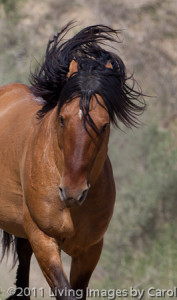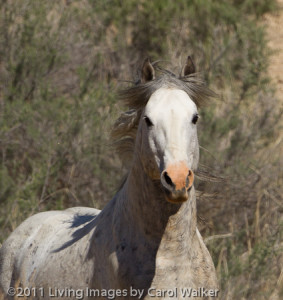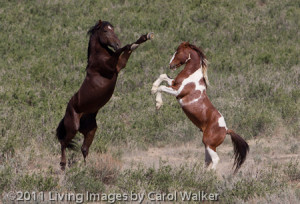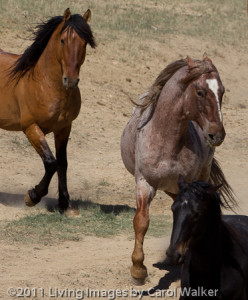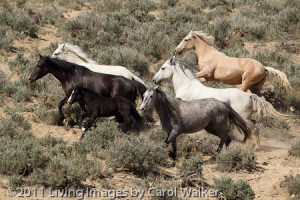I was in the Sand Wash Basin Herd Area in Colorado last week. Sometimes just finding wild horses can be a challenge, and it does help to know where waterholes are, where the horses like to be at certain times of the year, and other details about their behavior and their lives. The best way to find this out is by going and spending time with them.
One morning I was lucky enough to be in an area where many bands of horses were watering, at a waterhole with a well.
I wanted to be in a position where I could photograph the horses coming in to the waterhole with the sun behind my back, but I also did not want to be so close to the waterhole that I frightened them and scared them away. Horses are vulnerable when they are drinking, and alert for predators.
I ended up sitting on a hill overlooking the waterhole, but quite a distance from it. The horses could see me from very far away but I stayed still, and finally I was rewarded by many bands and bachelors coming to drink.
A long lens works best for photographing wild horses because it allows you to get good shots but be far enough away that you are not disturbing the horses’ behavior.
I had a feeling that there might be some action because it is spring and bachelor stallions are on the lookout for any opportunity to steal a mare, so I set my iso on 250 and my shutter speed on 1/1000, which works well for capturing action. In a situation where things might happen quickly and I may not have much time to change settings, I try to anticipate the settings I will need, so I don’t have to be scrambling and fumbling later.

